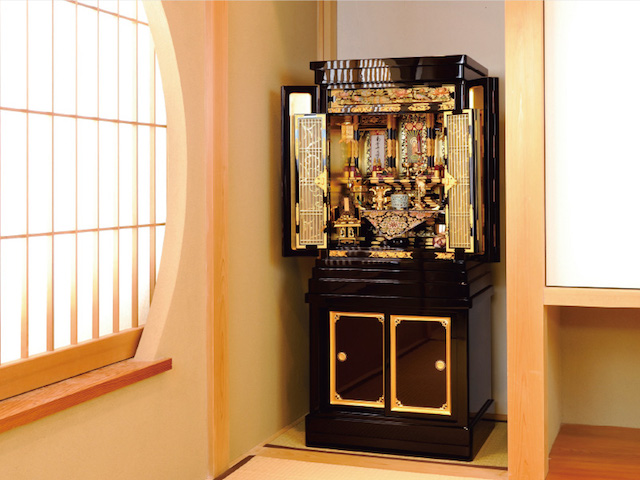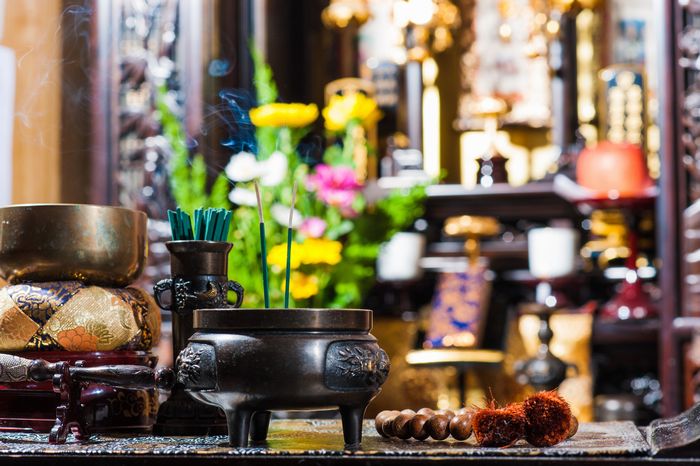2017
お仏壇 Obutsudan: the Japanese Tradition of Keeping Loved Ones Near, Even in Death
Even if you’re not very familiar with Japan, it can be safely assumed most of us know that Japanese culture is steeped in tradition. With Obon (a 4-day period of remembrance most Japanese people observe in August) coming up in just 2 short months, this is the perfect time to learn a little bit about the traditions and customs of your coworkers and friends, and to understand the death culture of Japan. One of the basics you need to know is Obutsudan. So, what is it?
- What is Obutsudan?
- How are Obutsudan used?
What is Obutsudan?

An Obutsudan is a type of small memorial shrine kept in the home. While it used to be something only the very wealthy had as a way to maintain their Buddhist practices at home, it gradually spread to all classes, and turned into a sort of replacement grave for loved ones so that they could be visited at any time.
The top is very decorative and features a small Buddha and is often decorated further with pictures of the deceased, and sometimes flowers. Mortuary plaques, called Ihai (位牌), are also placed in the top portion near the Buddha.

The front of the Ihai (left) features the death date and the Buddhist name of the deceased (given by a Buddhist monk). The back (right) is the real name and age at the time of death.
Incense is lit for praying at the Obutsudan, and left to burn out after praying is finished. The bottom doors, or sometimes drawers, often contain supplies for the Obutsudan, like decorative lamps and incense.

So, when and why do people pray at an Obutsudan?
How are Obutsudan used?
Outside of the Obon season, Obutsudan are used on the death day of the deceased (in large homes that can handle a family reunion), on specific anniversaries as per the tenets of Buddhism (the 1st, 2nd, 6th, 12th, 16th, 22nd, 26th, and 32nd death day anniversaries).
On these days, there is a large family reunion event called Houji 法事. If the house with the Obutsudan for the family member being honoured is too small to host a Houji, it can be conducted at the cemetery where the person’s ashes are interred, or at the temple that owns the cemetery.
Obutsudan are also used whenever family members miss the deceased or when they have been thinking about the person a lot. When other family members or friends of the deceased visit, they may sometimes bring fruits or other items the person enjoyed in life. The visitor places the items on the Obutsudan, lights the incense, and says a short prayer. After the prayer is finished, the incense is left to burn out on its own. Interestingly, the use of incense in an Obutsudan is for nourishment for the deceased, purifying yourself, and connecting to the person you are praying for.

Obutsudan is an important part of Japanese culture and tradition, and a way that Japanese people not only deal with death, but stay close to those they’ve lost. What do you think about Obutsudan? Do you think other cultures should adopt this tradition?